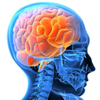- The positive effects of mental activity
- Cognition and mental stimulation
- Motor imagery and athletic training
- Depression and mental stimulation
- Children and mental stimulation
- Future research into mental stimulation and its effects
- How to implement your own mental training
The positive effects of mental activity

Mental activity increases the flow of blood, oxygen and nutrients to the brain. It also acts as a signal which promotes the expression of brain-derived neurotrophic growth factor (BDGF). BDGF is a protective chemical which induces growth and survival of neurons. The importance of BDGF has been determined through knockout studies. Knockout studies are studies carried out on animals, usually rats, where a certain physiologically important element such as a chemical, receptor or enzyme are “knocked out” of the animal through genetic manipulation. These studies have enabled scientists to determine the impact that not having a certain substance has on the animal. In this case, they have discovered that without BDGF, learning and attention is impaired because the transmission between neurons, (known as synaptic plasticity) is reduced. Synaptic plasticity has been found to be increased after as little as a few weeks of mental stimulation.
Cognition and mental stimulation
Mental activity is clearly emerging as a safe and effective strategy for delaying cognitive decline and impairment. Cognition refers to thinking. Cognitive decline, therefore, is the process of decline in normal thinking patterns and speed. Cognitive decline is an aging process associated with dementia.
Dementia incidence is significantly associated with mental stimulation; the greater the mental stimulation, the lower the risk of developing dementia. There is a 46% lower risk of developing dementia in individuals who utilise high mental activity levels compared to individuals who would be considered to use a low amount of mental activity.
The data suggests the risk for dementia appears to be substantially modifiable even during older age. Mental stimulation or cognition “training” has been shown to be beneficial in providing a protective and persistent neurological effect when used for as little as 3 months in late life (over 60 years of age). Cognitive programs that have been used to achieve this cognitive effect include:
Reasoning training: Reasoning training is a test in logic. In some neuropsychological conditions a person’s reasoning is affected. Reasoning training is a program that teaches a person how to come up with conclusions based on previous evidence. The reasoning starts quite simply and works up into more difficult tasks. An example of a simple task that requires logical reasoning may be, Sally’s sister was born in 1990, one year after Sally was and Sally’s brother was born 2 years before Sally. How old is Sally’s brother?
- Memory tasks: Memory tasks are, as the name suggests, tasks that test a person’s memory. An example of a memory task would be the seven digit-span task where the tester reads a number sequence with 7 digits and asks for them to be repeated back in order.
- Attention tasks: Attention tasks are tasks which test a person’s ability to attend to important information and ignore unimportant information.
- Information processing tasks: Information processing tasks test a person’s ability to process information. An example of an information processing task is one where a tester reads a number sequence, leaving a short space for an answer between each number. The person being tested needs to add “2” to the first number read out and give their answer. The person then needs to retain that number they have just answered and add it to the next number the tester calls out and so on.
- Problem solving: Problem solving tests a person’s ability to solve a problem presented to them. The problems require reasoning and logic in order to solve. Problem solving can include simple to difficult “brainteasers” or puzzles.
Many theories have been proposed for these protective effects offered by mental stimulation. Dementia and cognitive decline may be related to the cognitive “stores” of an individual. Accordingly, people who are able to use their brain more effectively by using different problem solving strategies and brain networks are more likely to build a better “store” during life and hence will have a decreased risk of dementia.
Enriching mental activity also induces increases in synaptogenesis, with synaptic connections increasing by 50-100%. As the density of synapses is decreased in patients with dementia this effect is proposed to have a significant influence on the cognitive protection provided by stimulation.
Difficult problem solving situations are not the only option for enrichment and mental stimulation, even leisure activities are sufficient to stimulate persistent mental effects. The risk for dementia has been found in some studies to be decreased by as much as 50% for those who regularly engage in leisure activities, such as arts, crafts and competitive sports. Even mild leisure activities can reduce dementia risk by 33%.
Motor imagery and athletic training

The theory behind motor imagery is that the mental planning and anticipation before an event work to mentally prepare an athlete, both mentally and physically. Motor imagery induces physiological responses in the autonomic nervous system including release of adrenaline, elevation of heart rate and blood pressure.
Furthermore this technique has been hypothesised to aid in rehabilitation after stroke or other diseases which affect movement, such as a relapse in multiple sclerosis. The physiological responses induced as a result of the imagery are not only related to physical preparation for activity but emotional preparation. Attention, arousal and learning mechanisms are all responses which are activated during motor imagery.
Depression and mental stimulation
Depression is a common effect of lack of mental activity. The effects of mental stimulation have a flow-on effect. Activation of the mind increases physiological responses in the brain by inducing the flow of oxygen, blood and nutrients. Without activating these mechanisms neurons will eventually begin to shrink, as will the brain. These neurological effects flow-on to the psychological effects such as boredom and depression.
Children and mental stimulation
The importance of mental stimulation may be most apparent for children. Children who do not receive enough stimulation in the first 5 years of life are predisposed to learning, attention, behaviour and language difficulties later in life. Children from homes with limited opportunity to experience a healthy degree of mental stimulation and nourishment will experience disadvantages in their early learning years and throughout their schooling career. Furthermore, rates of antisocial behaviour, poor earnings, and criminal activity are increased in children of socially disadvantaged homes where this may be the case.
Early education programs, social interactions, parent-child interactions and teacher visits have been shown to impact positively on future education, decrease high school dropout rate and lower the rates of violent arrests.
Early experience, whether negative or positive, in a child’s life has been shown to have a significant impact on their brain function and architecture. Head circumference is affected by environmental factors in early life as the maximum circumference is achieved by puberty. Although architectural brain development such as this is largely determined by genetics and nutrition, stimulatory environments provide the child with the potential to grow and learn optimally. Children should be exposed to a wide range of social and environmental stimulation from very early on.
Future research into mental stimulation and its effects

Studies into the cross-over effect of mental stimulation would also be a very worthwhile research avenue. The question has been posed as to whether different types of mental stimulation, for example social versus educational stimulation, work together to produce positive effects or are there different neurological effects seen with the different types of mental stimulation?
Clearer answers to the above will allow psychologists and doctors to tailor training programs to better suit individuals to both combat existing learning and psychological problems or to prevent cognitive decline.
How to implement your own mental training
It is worthwhile taking every opportunity to make sure your mind is active. Consistently engaging in activities you enjoy, social experiences and various environmental stimuli will have many benefits for your mental and neurological wellbeing. Try to set yourself challenges at work or school, this will help to keep you focussed and interested. Make sure you take your break at lunchtime too, in order to vary the environmental stimulation you are receiving.
More information
 |
For more information on brain health, including nutrition and exercise, see Brain Health. |
References
- Saunders MN. The physiology of boredom, depression and senile dementia. Medical Hypotheses. 1996: 46(5):463-6.
- Valenzuela M, Sachdev P. Can cognitive exercise prevent the onset of dementia? Systematic review of randomised clinical trials with longitudinal follow-up. Am J Geriatr Psychiatry. 2009; 17(3):179-87.
- Valenzuela MJ. Brain reserve and the prevention of dementia. Curr Op Psychiatry. 2008; 21: 296-302.
- Myers DG. Psychology 7th Edition. New York: Worth Publishers; 2003.
- Oishi K, Maeshima T. Autonomic nervous system activities during motor imagery in athletes. J Clin Neurophysiol. 2004; 21(3):170-9.
- Gwynne K, Blick BA, Duffy GM. Pilot evaluation of an early intervention programme for children at risk. J Pediatr Chil Health. 2009; 45:118- 24.
All content and media on the HealthEngine Blog is created and published online for informational purposes only. It is not intended to be a substitute for professional medical advice and should not be relied on as health or personal advice. Always seek the guidance of your doctor or other qualified health professional with any questions you may have regarding your health or a medical condition. Never disregard the advice of a medical professional, or delay in seeking it because of something you have read on this Website. If you think you may have a medical emergency, call your doctor, go to the nearest hospital emergency department, or call the emergency services immediately.

 Reasoning training:
Reasoning training: 





